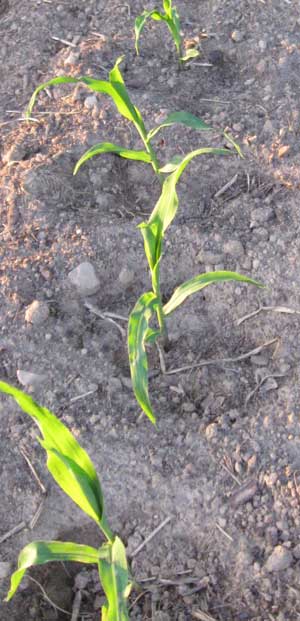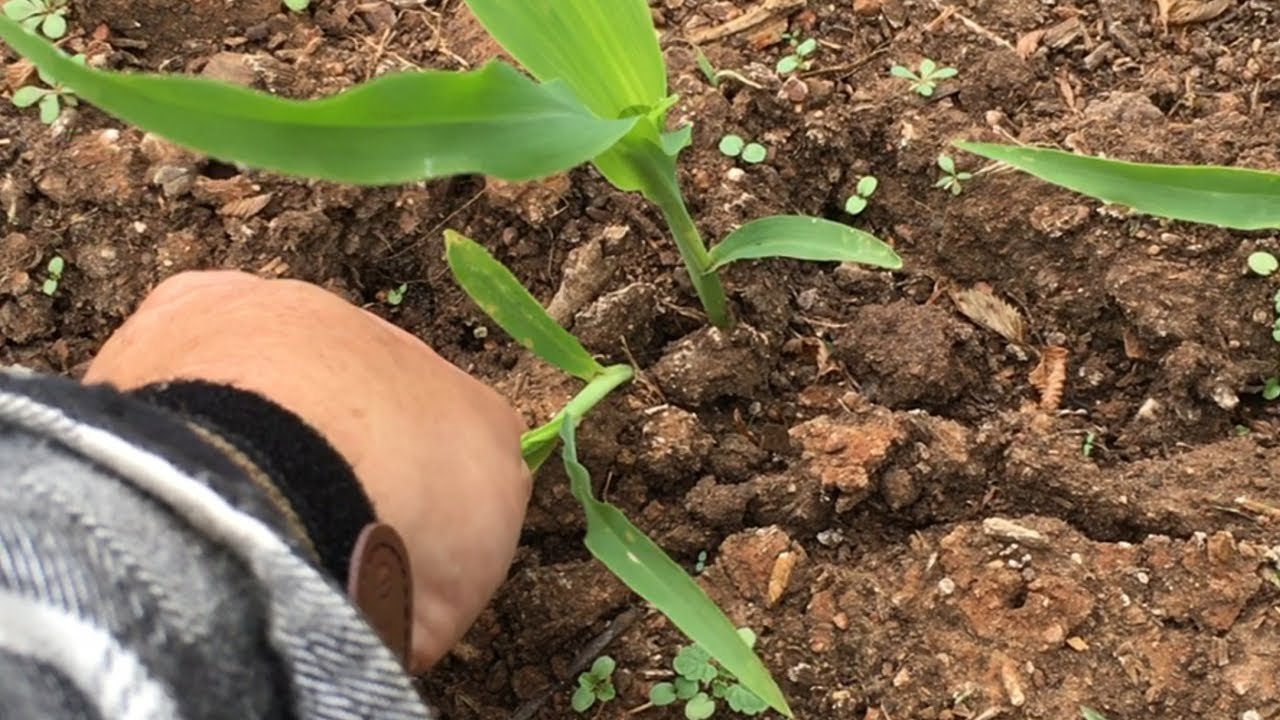To thin corn, start by spacing the plants 8-12 inches apart after they reach 4-6 inches in height. This allows enough room for each plant to grow and prevents overcrowding.
Additionally, remove weaker seedlings to give the remaining plants more nutrients and space to thrive.

Credit: blog.southernexposure.com
Why You Should Thin Corn Plants
Thinning corn plants is an essential process that can significantly improve your overall yield. By removing excess plants, you allow the remaining ones to have more space, light, and nutrients to thrive. This reduces competition among the plants for these vital resources, ensuring each plant gets what it needs to grow and produce high-quality corn.
Another benefit of thinning corn is the improvement of air circulation. When the plants are too close together, air movement becomes limited, creating a favorable environment for diseases and pests. Thinning allows for better airflow, decreasing the chances of disease development and promoting healthier plant growth.
Thinning corn plants should be done early in the growing season, when the plants are still small and easily identifiable. It is recommended to keep a distance of about 8-12 inches between plants to ensure proper growth and maximize the potential yield. Take care when thinning to avoid damaging the remaining plants.
Understanding The Best Time To Thin Corn
Thinning corn at the right time is crucial for healthy plant development and maximum yield. It is recommended to wait until the corn plants are about 3-4 inches tall before thinning them. This ensures that each plant has enough space, sunlight, and nutrients to grow properly. Thinning too early or too late can result in stunted growth and reduced productivity. During the early stages of growth, corn plants are more delicate and vulnerable, so it is important to handle them with care.

Thinning at this stage allows the remaining plants to establish strong root systems and helps prevent overcrowding, which can lead to competition for resources. When thinning, remove the weaker or less vigorous plants, while leaving the healthier ones to thrive. By following these guidelines, you can promote optimal corn growth and achieve better yields in your garden or farm.
Step-by-step Guide On How To Thin Corn Plants
Assess the health and spacing of plants – Before thinning your corn plants, take a close look at their overall health and spacing. Identify weaker or stunted plants that may struggle to thrive alongside healthier ones. Additionally, determine if the plants are overcrowded, as this can hinder their growth and yield.
Carefully remove selected plants – Once you have identified the plants that need to be thinned, proceed with caution. Gently pull out unwanted plants to avoid damaging nearby ones. Pay close attention to the roots and avoid disturbing the soil excessively.
Maintain proper spacing – After thinning, it’s important to maintain proper spacing between corn plants. Make sure to use recommended spacing guidelines provided for your specific corn variety. This will allow each plant to have enough room for healthy growth and minimize competition for sunlight, nutrients, and water.
| Before Thinning | After Thinning |
|---|---|
| Overcrowded plants | Properly spaced plants |
| Stunted plants | Healthy, thriving plants |
| Uneven growth | Uniform growth |

Essential Tips For Successful Corn Thinning
Thinning corn is a crucial step in ensuring healthy plant growth and maximizing yields. Different corn varieties may require specific thinning techniques to achieve optimal results. When thinning, it is important to properly dispose of the removed plants to prevent any potential pests or diseases from spreading.
| Variety | Thinning Technique |
|---|---|
| Sweet Corn | Remove weaker plants, keeping the strongest ones about 8-12 inches apart. |
| Dent Corn | Thin when plants are around 4 inches tall, leaving 12-18 inches between them. |
| Popcorn | Thin to a final spacing of 8-10 inches between plants for optimal ear development. |
Proper disposal of removed plants is essential to prevent the spread of potential pests and diseases. Burn or bury the removed plants away from the growing area, ensuring they are completely removed from the site.
While thinning corn, be aware of potential pests and diseases. Common pests include corn borers, armyworms, and corn earworms. Timely pest control measures can help protect the remaining plants. Diseases like common rust, gray leaf spot, and northern corn leaf blight can also affect corn plants. Regular scouting and appropriate disease management strategies are crucial to prevent crop damage.
Frequently Asked Questions On How To Thin Corn
How Do I Thin Corn Plants?
To thin corn plants, simply remove the excess plants to create a proper spacing between them. This helps the remaining plants receive ample sunlight, nutrients, and space to grow. Thin the plants when they are around 4 to 6 inches tall, leaving about 8 to 12 inches between each plant.
Why Is Thinning Corn Important?
Thinning corn is important because it allows the remaining plants to have enough space for optimal growth. Proper spacing prevents overcrowding, provides adequate air circulation, and reduces competition for nutrients and sunlight. Thinning also helps in preventing the spread of diseases and allows for easier weed control.
What Is The Ideal Spacing For Corn Plants?
The ideal spacing for corn plants depends on the variety being grown. Generally, aim for a spacing of 8 to 12 inches between plants within a row. The rows themselves should be about 30 to 36 inches apart. However, always check the specific recommendations for the corn variety you are growing as spacing requirements may vary.

Conclusion
Thinning corn plants is a crucial step in ensuring optimal growth and yield. By removing excess seedlings and spacing them adequately, you give each plant the necessary resources to thrive. Remember to wait until the seedlings have reached a certain height before thinning and avoid overcrowding.
Regularly monitoring and adjusting your corn patch will result in healthy, robust plants that produce abundant harvests. Happy thinning!

